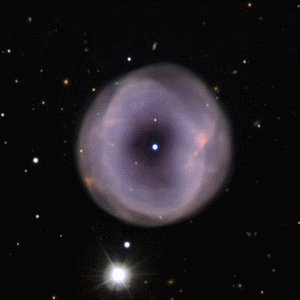
Clear November night skies offer incredible celestial treats for stargazers, so bundle up and get outside for stargazing fun! This November we'll hopefully have a visible visitor from beyond the inner solar system - comet ISON!
Comet ISON Starts to Shine - If all goes well, comet ISON will reach naked-eye brightness in the predawn sky this month! Even from early November, the comet should be visible to users of small telescopes (from a dark sky location). ISON passes closest to the Sun on November 28, when the comet may get as bright as the planet Venus. The real question is whether the comet will break up after it skims by the Sun. Watch our community center for frequent updates in November.
Leonids Meteor Shower - The night of Saturday, November 16 is the peak of the annual Leonids Meteor Shower. However, this year the full moon nearly coincides with the shower (Full Moon is the 18th), so only the very brightest meteors will be visible. The Leonids are the left-over debris of comet Temple-Tuttle, a comet that orbits the Sun every 33 years.
Big and Bright, Jupiter Season is here - In early November the gas giant planet Jupiter rises in the east about 10:30PM, but by the end of the month it will rise before 8PM and be quite high in the eastern sky by midnight - a perfect position to get great views. Jupiter will be the brightest object in the eastern sky. Nearly any telescope, and even good binoculars, should show the four brightest Galilean Moons (discovered by the inventor of the telescope, Galileo) and a 3" or larger refractor will show detail on the planet itself with moderate to high power. Use a blue Jupiter filter to enhance contrast of the planet's major equatorial cloud bands.
Best Star Cluster - M45, the Pleiades. November is sometimes called "the month of the Pleiades," since it is visible all night long for observers in the Northern hemisphere. From a dark sky site, it is easy to see with the unaided eye and resembles a small "teaspoon" in the sky, but this open star cluster is best appreciated in a good pair of binoculars or a low power telescope.
Best Galaxy - M31, The Andromeda Galaxy. If you view the sky often, you've been watching this object for months now; around 9 PM in early November the Andromeda Galaxy can be found in the constellation Andromeda and positioned high in the eastern sky for great telescopic views.
A Bright Spot in the Milky Way - High in the northern sky at 10 PM is a brighter knot in the Milky Way, between the constellations of Perseus and Cassiopeia. With binoculars you can tell that it is really two open star clusters side by side, the famous Double Cluster in Perseus. Also called NGC 884 & NGC 889, these star clusters are relatively very close to Earth, about 7-8,000 light years away. They're also very young star clusters. Astronomers believe these are only about 3-5 million years old, just "babies" on the cosmic timescale!
A Dark Sky Test - On the opposite side of Andromeda is another nearby galaxy, M33. Use a star chart to look for it in 50mm or larger astronomy binoculars. If you have a dark sky site to observe from, you can even detect this galaxy with the unaided eye. In fact, M33 is used as a test by many experienced observers to judge the darkness and transparency of a potential observing site.
Catch a Dying Star - High in the western skies of November, early in the evening, the constellation Cygnus is still prominently visible and topped off by the bright star Deneb at the top of the "Northern Cross." Use a star chart to track down the Veil Nebula on the eastern side of Cygnus near the star 52 Cygni. Use an Oxygen III filter and low power while you scan for this object. The Veil is a remnant of a supernova explosion, where a star has died! We recommend a 4" or larger telescope to catch it (but it has been seen in smaller scopes from good dark sky locations).
November's Challenge Object - Low in the southern sky, in the constellation Grus, lies a BIG planetary nebula called IC5148. You'll need at least a 6" telescope to see it, and an Oxygen-III filter really helps. This 13th magnitude planetary is 120" x 120" across, so it's nice and big, but it's tough for most observers to catch since it is so low in the south and the surface brightness is low. IC5148 is about 3000 light years away and is sometimes called the "Spare Tire" Nebula.

ESO Photograph of IC5148 with the New Technology Telescope
All objects described above can easily be seen with the suggested equipment from a dark sky site, a viewing location some distance away from city lights where light pollution and when bright moonlight does not overpower the stars. All objects have been verified by actual observations by Orion Telescopes & Binoculars Staff at Fremont Peak State Park, and/or Deep Sky Ranch, 60 miles and 90 miles respectively from San Jose International Airport, San Jose, CA.















